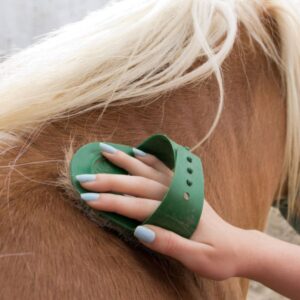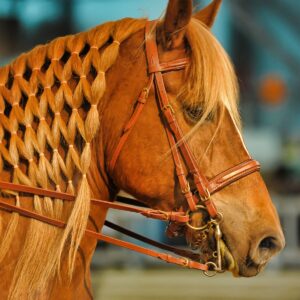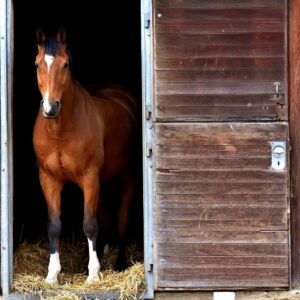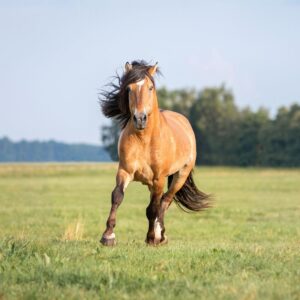Having horses comes with a lot of responsibilities, one of which is providing them with feeding hay bales. whether your horses need hay all year or just during the winter months is based on the lifestyle of your horse. Forage is a necessity for horses, making up the majority of their diet, and ensuring that they are being fed good quality hay is important for maintaining your horse's health.
When scoping out hay bales, be sure to check out the leaf to stem ratio. Horses like leafy greens too, so good horse hay has more flat leaves than stems and the stems should be small in diameter. Take a whiff of the hay, be sure it doesn’t smell like mold or dust. Hay that contains mold can lead to digestive problems. It should also be a faded green color. If the hay bale is yellow or faded, it most likely has lost its nutrients and shouldn’t be fed to your horse.
Next, decide what form you prefer your hay to come in, as there are two basic forms, square hay bales and round hay bales. Both have their own pros and cons.
Square Hay Bales
Square bales usually weigh in at about 50lbs. They are easy to move and easy to feed as they are separated into flakes. These bales are usually the go-to for horses because of their convenience and a definite for horses that are stalled. Square bales are usually more high quality as well because of how they are stored when harvested off of the fields.
However, their convenience also comes with a price. Square bales are more expensive because of how labor-intensive the making of the bales are. Unless the farmer has a square bale picker, all bales must be picked up off of the field by hand and stacked in storage by hand.
Round Hay Bales
Round hay bales are much larger in size, weighing in at about 1400lbs. The only way to move a round bale is by tractor. Round bales can be fed by peeling layers off with a pitchfork to control how much is being fed or they can be placed in a feeder to allow for free choice. Round bales are quicker to make and less labor-intensive for farmers so they are usually cheaper.
After being harvested, round bales are usually stored outside and the tops can be covered. They are still of good quality, but because of being stored outside and subject to rain, usually the first couple of layers need to be wasted because of mold. Round bales that are not being fed should always be stored on their side, for this reason, so only the outside layers are subject to the weather. Round bales are nice for pastured horses but are an inconvenience to stalled horses.
When choosing hay, the first thing to keep in mind should be whether your horse is pastured or stalled. Then decide if you have the means to transport the hay. Square hay bales are small enough to put in the back of a car whereas round bales need larger equipment. Whichever you decide, be sure to inspect the quality of the hay before purchasing, remembering that hay takes up the majority of your horse’s diet.
Horse Courses by Elaine Heney
- Listening to the Horse - The Documentary by Elaine Heney & Grey Pony Films
- Shoulder In & Out Training for better balance, bend & topline development with your horse
- Over 110+ Polework Exercises & Challenges to Download
- Dancing at Liberty & Creating Connection with Your Horse (11 lessons) - Grey Pony Films
Sources: [1]








Leave a Reply